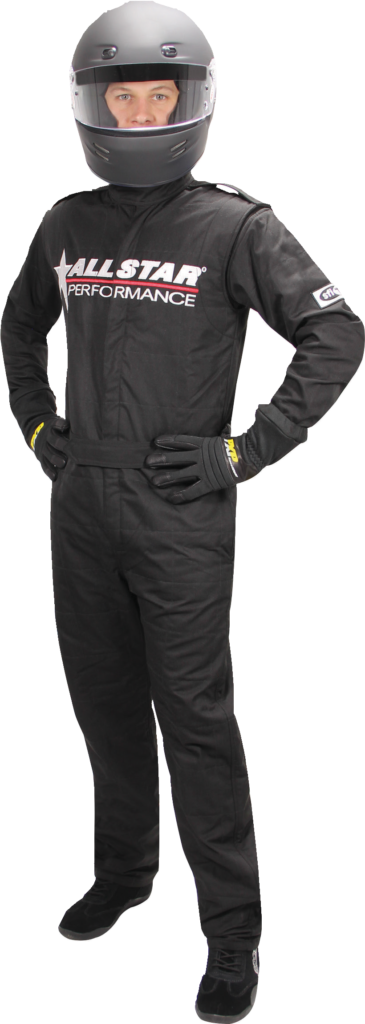The phone calls typically start coming in to your store less than a week before the first race of the season, and the customers want to know if you have all the safety gear they need to meet track or series regulations. Odds are that you are better informed about their safety requirements than the customers; if not, becoming well-versed in (or at least having access to) the guidelines for local or regional tracks is highly recommended.
Depending on the type of racing, this can be as simple as finding the rules page on a website. In some cases, it may require purchasing a membership or license to get access to the regulations. Speaking with other racers and officials, as well as spending time at the track making observations, can also help greatly in getting familiar with specific needs that will assist you with customer requests.
The first piece of safety gear every racer needs is a helmet. Will any helmet do? Of course not. Knowing the required safety rating for the track or sanctioning body is the first priority. For example, many motorsports enthusiasts ask, “What’s the difference between a motorcycle M-rated helmet, and the motorsports SA-rated helmet?” SA-rated helmets are designed and tested differently than motorcycle helmets. For example, the fabric liner and face shield in a SA-rated helmet is fire-retardant, while those of a motorcycle helmet are not.
The Snell Foundation tests over 3,000 helmets in various categories each year, and not all will become certified. In addition, the Snell Foundation updates its performance standards every five years. For example, a helmet with SA2015 designation meets the 2015 certification requirements and is valid through October 2020, when the new certification period debuts. Leading helmet manufacturers like Bell, Racequip, Simpson, and Zamp all regularly update their helmets and put them through rigorous testing to make sure they meet each new certification requirement.
Despite the Snell Foundation certification process, some local tracks require simply that a helmet be in good condition. This approach may get a few more racers on the track, but remember that racing is a hobby for most competitors. The subject of track safety focuses in part on keeping drivers safe on the track so everyone can get back to their weekly job on Monday. The best advice you can offer your customer is recommending the purchase of the correct, properly fitted, Snell-certified helmet with the most current date label.
The next most common piece of safety gear needed is the safety harness. Available from Impact Racing, Racequip, RJS, Simpson, and others, safety harness can come in a variety of designs. If you have done your homework, this area of safety presents the best opportunity to sell a higher end set of harnesses. The features of a safety harness include the width, typically 2” or 3”; the locking mechanism, latch-and-link or camlock; the number of mounting points, four, five, six, or seven; and the mounting type, wrap-around or bolt-in. Personal preference factors such as the brand and color of the harness can play an important role in the purchase.
Another important piece of safety gear is the driving suit. Many entry-level racing classes have much different requirements from higher race classifications. This may be an attempt to keep the cost of racing down, or the perceived need is less than other forms of motorsports. If you have ever seen or experienced a fire at the racetrack, you realize this is not the area to go budget shopping. The pain and recovery time for burns can be far worse than most other types of injuries.

Driving suits, made by companies like Allstar Performance, Alpinestars, OMP Racing, Simpson, Zamp, and others, are constructed with different types of flame-retardant materials and a variety of designs. SFI’s specifications rate the resistance of safety suits and other apparel to fire and heat (Thermal Protective Performance, or TPP, rating). These ratings are determined by the design and materials used, and vary between styles and manufacturers. Being able to explain those differences will help give your customer confidence in their purchase.
The most recent piece of standard safety equipment to enter the motorsports market is the head and neck restraint. The safety device, known to many as the Hans Device, was introduced in 1991 by Hans as a means to reduce the sudden strain placed on the spine and skull in the event of a frontal crash. As additional companies such as NecksGen, Simpson, and Zamp produce SFI-approved head and neck restraint devices, the cost has come down substantially over the past several years. They are now mandated by a large number of sanctioning bodies across the motorsports spectrum.
There are many other types of safety gear and apparel, such as gloves, shoes, balaclavas, and underwear that also play an important part in protecting the driver. Depending on the type of racing, additional safety components are often part of the vehicle, such as roll bar padding, window nets, fire-suppression systems, and even engine diapers and drive shaft loops.
Effectively selling safety gear is much like selling engine or suspension parts–you need to understand the needs of your customer and be aware of the requirements of the relevant sanctioning bodies and tracks so that you can effectively guide your customer with their purchases. Always remember–for the majority of the drivers competing on the weekends, racing is a hobby, and getting safely back to family life as well as to work on Monday is their highest priority. The right safety gear will not only protect the racers who count on your expertise; it will make them a better driver, as well as a loyal and longtime customer.